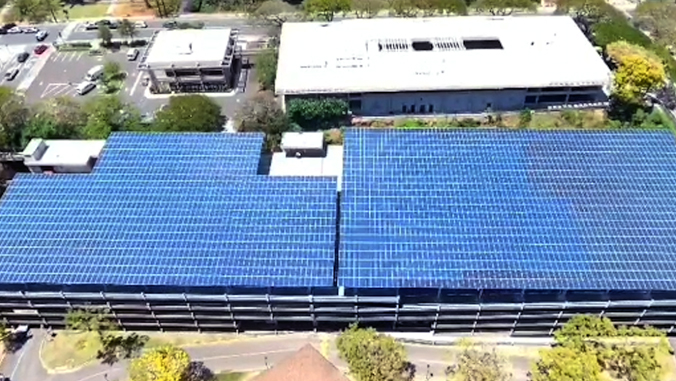
The first half of the photovoltaic (PV) canopy project on the top deck of the University of Hawaiʻi at Mānoa is expected to be completed and operational by the end of June. Work on the second half of the project is now scheduled for construction during the summer of 2020.
The project will help UH reach its mandated goal of net-zero energy by 2035, and the state goals of 100 percent renewable energy by 2045. The PV canopies on the parking structure are expected to generate about three megawatts of electricity when fully operational. During peak use, the Mānoa campus uses about 20 megawatts, the energy consumption equivalent of around 10,000 to 20,000 residential homes.
The PV systems were procured using a Power Purchase Agreement, which allows the university to increase its renewable footprint, provide shade for cars and pedestrians, and lower its electricity bill without incurring any construction cost.
The project is expected to save between $2 million to $8 million over its lifetime, depending on future energy costs.

